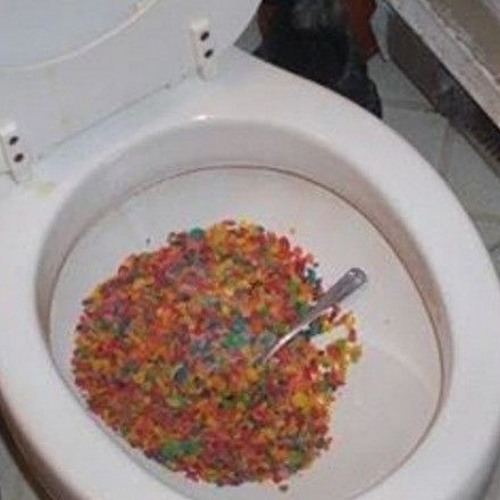Can You to Flush Food in the Toilet?
Can You to Flush Food in the Toilet?
Blog Article
We've noticed this post on What Can Happen If You Flush Food Down the Toilet? down the page on the net and accepted it made good sense to relate it with you in this article.

Introduction
Many individuals are typically faced with the problem of what to do with food waste, particularly when it pertains to leftovers or scraps. One typical question that arises is whether it's okay to purge food down the toilet. In this article, we'll look into the reasons individuals may consider flushing food, the consequences of doing so, and alternate approaches for proper disposal.
Reasons that people might think about purging food
Absence of awareness
Some individuals may not know the possible harm brought on by purging food down the commode. They might incorrectly think that it's a safe practice.
Comfort
Flushing food down the bathroom may seem like a quick and very easy remedy to throwing away undesirable scraps, especially when there's no close-by trash can available.
Negligence
In some cases, individuals may simply pick to flush food out of sheer negligence, without taking into consideration the repercussions of their activities.
Effects of flushing food down the bathroom
Ecological impact
Food waste that winds up in rivers can add to pollution and injury water communities. Furthermore, the water utilized to purge food can stress water sources.
Pipes concerns
Flushing food can lead to clogged up pipelines and drains pipes, triggering pricey pipes repair work and hassles.
Sorts of food that need to not be purged
Fibrous foods
Foods with coarse appearances such as celery or corn husks can get tangled in pipelines and create obstructions.
Starchy foods
Starchy foods like pasta and rice can soak up water and swell, resulting in obstructions in pipes.
Oils and fats
Greasy foods like bacon or food preparation oils need to never ever be purged down the commode as they can strengthen and cause blockages.
Proper disposal approaches for food waste
Utilizing a waste disposal unit
For homes furnished with garbage disposals, food scraps can be ground up and flushed with the plumbing system. Nonetheless, not all foods appropriate for disposal in this fashion.
Recycling
Specific food product packaging products can be reused, lowering waste and decreasing ecological influence.
Composting
Composting is an eco-friendly way to deal with food waste. Organic products can be composted and utilized to enrich soil for horticulture.
The value of appropriate waste management
Lowering ecological harm
Proper waste monitoring methods, such as composting and recycling, assistance reduce air pollution and protect natural resources for future generations.
Protecting plumbing systems
By preventing the method of flushing food down the bathroom, homeowners can avoid pricey plumbing repairs and preserve the stability of their plumbing systems.
Verdict
In conclusion, while it may be alluring to flush food down the bathroom for benefit, it is very important to recognize the potential effects of this activity. By taking on proper waste management practices and disposing of food waste sensibly, individuals can add to much healthier plumbing systems and a cleaner setting for all.
FLUSH FOOD DOWN THE TOILET?
FLUSHING FOOD CAN CAUSE BLOCKED DRAINS IN YOUR HOME
All of the plumbing fixtures in your home are connected to the same sewer pipe outside of your home. This outdoor sewer pipe is responsible for transporting all the wastewater from your home to the Council sewer mains. Even small pieces of food that go down the kitchen sink can cause problems for your sewer. It should therefore be obvious that flushing larger bits of food, such as meat, risks a clog in either the toilet itself or the sewer pipes. Flushing greasy food is even more problematic because oil coagulates when it cools, coating the interior lining of your pipes.
THE TOILET IS NOT A BIN
Food isn’t the only thing that people shouldn’t be flushing down the toilet. People use the toilet to dispose of all kinds of things such as tampons, makeup wipes, dental floss, kitty litter and even underwear. Water goes to great lengths to educate residents about the high costs and stress placed on wastewater treatment systems simply from people flushing the wrong stuff down the toilet. It costs taxpayers millions of dollars each year, and homeowners thousands in blocked drain repairs.
FLUSHING FOOD IS A WASTE OF WATER
Flushing food is a waste of our most precious resource - water. In June this year Level 1 water restrictions were introduced to protect water supply from drought conditions. Much of New South Wales continues to be affected by prolonged drought with recent figures revealing up to 97 per cent of the state remains in drought. Depending on whether you have a single or dual flush toilet, every single flush uses between five and 11 litres of water. In the current climate this is a huge amount of water to be wasting on flushing food that should be placed in the bin (or better yet, the compost).
https://www.jabplumbingsolutions.com.au/blog/can-you-flush-food-down-the-toilet

I'm just very serious about and I really hope you appreciated the post. If you liked our post please do not forget to pass it around. I am grateful for being here. Please check our blog back soon.
Request An Estimate Report this page